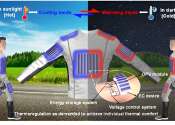Carpentry Compiler helps woodworkers design objects that they can actually make
As the holidays approach, people might be thinking of neat do-it-yourself woodworking projects to give as gifts. But there's often a disconnect between designing an object and coming up with the best way to make it.
Dec 2, 2019
6
215









